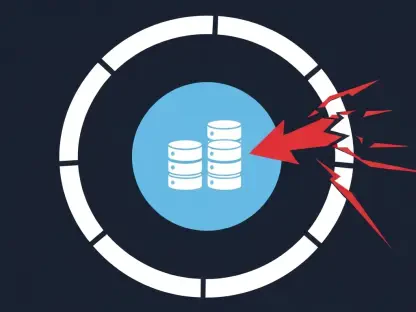The advent of quantum computing presents unprecedented risks to the security of critical infrastructure, elevating the urgency for post-quantum protection. Unlike traditional computing, quantum computers can potentially decrypt current encryption methods at a much faster rate, necessitating immediate and robust strategic measures. Quantum computing advancements, once considered science fiction, are now on the verge of becoming a reality, making it imperative for governments and industries to reconsider their security protocols and prepare for a post-quantum world where traditional encryption stands no chance.
The Quantum Leap: A Double-Edged Sword
Quantum computing innovations are not merely theoretical but could soon render existing encryption ineffective. Drawing historical parallels such as the breakthroughs in nuclear research, the article delves into the unpredictability of technological advancements and their capacity to outpace many expectations. This unpredictability serves as a compelling reason to avoid complacency in preparing for quantum threats. In the same way nuclear capabilities changed global security dynamics, quantum computing could disrupt the current cybersecurity landscape, making the need for preparation and adaptation more critical than ever before.
The rapid development in quantum technology means that many high-value assets and sensitive data currently secured by classical cryptographic techniques could be at risk. The thought of encryption being broken effortlessly by quantum computers underscores the importance of exploring and implementing quantum-resistant cryptographic solutions. As the capabilities of quantum computers grow, the timeline for these threats becomes shorter, leaving less room for error or delay in upgrading existing security measures to withstand forthcoming challenges. Therefore, stakeholders must acknowledge the dual-edged nature of these advancements, balancing their benefits against the potential risks they introduce.
The Harvest Now, Decrypt Later (HNDL) Tactic
A key strategy leveraged by adversaries, known as ‘harvest now, decrypt later’ (HNDL), poses a significant threat wherein encrypted data is collected today with the anticipation of decrypting it through quantum computing in the future. This tactic underscores the critical timing in enhancing security measures now to protect sensitive information and infrastructure from prospective threats. Adversaries’ ability to accumulate encrypted data and patiently wait for quantum advancements means that the window for fortifying current encryption methods is narrowing rapidly.
HNDL represents more than just a hypothetical risk; it is an operational reality with considerable implications. Sensitive information, ranging from state secrets to financial records, can be intercepted and stored with the expectation that it will eventually be decrypted. Consequently, the potential for widespread exposure of critical data demands immediate action to integrate quantum-resistant encryption. The necessity for proactive measures is amplified by the possibility that adversaries have already initiated such strategies, silently collecting data that remains secure under today’s standards but could become exposed in the near future. Addressing this threat requires a forward-thinking approach to encryption, ensuring that data integrity and confidentiality are maintained as the computational landscape evolves.
Vulnerabilities in Operational Technology (OT) Systems
Operational technology systems that control critical infrastructure like power grids, water supplies, and transportation networks are particularly vulnerable. The article highlights the reliance of these systems on data such as configuration files and schematics, which, if decrypted, could lead to severe disruptions. The necessity for robust encryption standards that can withstand the potential capabilities of quantum computers is emphasized. Given the extended lifecycle of OT systems, the encryption protecting critical operations must be future-proof to withstand the anticipated progress in quantum decryption.
The vulnerabilities inherent in these systems stem from their critical functions and the sensitive information they process. Unauthorized decryption of OT data can provide adversaries with the tools necessary to infiltrate, disrupt, or sabotage essential services. The strategic importance of ensuring that these systems are safeguarded against quantum threats cannot be overstated. Establishing quantum-resistant encryption now will protect infrastructure crucial to public safety and economic stability from future exploitation. As quantum computing continues to evolve, the urgency to enhance the security of operational technology becomes increasingly apparent, necessitating immediate and comprehensive updates to existing cybersecurity measures.
Overhauling Cybersecurity Protocols
Cybersecurity authorities worldwide are recognizing the pressing need to address quantum threats proactively. National initiatives and acts, such as Australia’s 2018 Security of Critical Infrastructure Act, reflect a shift towards integrating cryptographic resilience. Embedding this into broader cybersecurity frameworks is highlighted as essential for lasting protection against quantum advancements. This shift signifies a move from viewing cybersecurity as a technical concern to a national security imperative, demanding coordinated efforts at all levels of governance and industry.
Implementing robust post-quantum cryptographic protocols involves rethinking existing security frameworks and ensuring they are adaptive and resilient to emerging threats. Authorities are advocating for a holistic approach that not only addresses immediate security needs but also anticipates future risks posed by quantum decryption. This proactive stance aims to build a resilient infrastructure capable of withstanding both current and prospective cyber threats. By prioritizing cryptographic resilience, cybersecurity strategies can offer sustainable protection, ensuring that vital data and systems remain secure as quantum technologies mature.
Frontline Defense and Awareness
Effective defense against quantum threats involves not only technological advancements but also heightened awareness among frontline personnel. Field technicians and engineers need to be equipped to identify and respond to subtle indications of ‘harvest now, decrypt later’ breaches. Training and education efforts are vital to ensure preparedness at all operational levels. Simply employing advanced cryptographic techniques is not enough; a well-informed workforce capable of recognizing and responding to potential threats can significantly enhance security.
This focus on awareness underscores the human element’s importance in cybersecurity. Implementing comprehensive training programs ensures that all personnel, from IT specialists to field operators, understand the ramifications of quantum threats and the necessity for vigilant monitoring and response. As technological defenses are fortified, equipping frontline staff with the knowledge and tools to detect and address quantum-related breaches becomes a critical component of an integrated security strategy. Ensuring that all layers of an organization are prepared to tackle quantum threats can be instrumental in maintaining a robust defense posture.
Future-proofing Critical Infrastructure
The article underlines the importance of coordinated efforts across governments, industries, and regulators to enforce post-quantum cryptography. Investments in quantum-resistant data tunnels and reevaluation of supply chain protocols are critical steps. The potential for data re-exploitation as quantum capabilities evolve necessitates forward-thinking contingency planning to mitigate long-term risks effectively. Preparing for quantum threats involves not only securing data and systems but also ensuring that these measures remain effective over time as technology advances.
A holistic approach to future-proofing critical infrastructure requires continuous investment in research and development of quantum-resistant technologies. Governments and industries must collaborate to set standards and best practices, ensuring uniformity in the adoption and implementation of advanced cryptographic solutions. In addition to technological upgrades, contingency planning plays a vital role in addressing the potential threat of data re-exploitation. By establishing comprehensive plans that anticipate and mitigate the risks posed by quantum computing advancements, organizations can better protect their critical infrastructure and sensitive information.
Collaborative Efforts for Quantum Resilience
As the fuse of the quantum threat burns, immediate action remains of the utmost importance and demands continued orchestration among relevant stakeholders. A concerted effort by governments, regulators, and industries can establish a standardized approach to quantum resilience. Prioritizing post-quantum cryptography for all critical communications ensures that long-term data confidentiality aligns with strategic continuity objectives. Additionally, securing quantum-resistant data tunnels capable of functioning under various states, from degraded to fully operational, is crucial for maintaining robust defenses.
Actions should include reevaluating supply chains for vulnerabilities, especially concerning firmware signing, vendor update mechanisms, and remote access protocols. An organization’s security is dependent on its weakest link; thus, ensuring every component’s quantum resilience is crucial. Moreover, field technologists and engineers should be trained to detect anomalies that could indicate HNDL breaches, which may not register through traditional security measures. Enhancing field awareness and preparedness is an integral part of a comprehensive defense strategy against the impending quantum threat.
The Time to Act is Now
The rise of quantum computing introduces unprecedented threats to the security of vital infrastructure, heightening the need for post-quantum defense mechanisms. Unlike traditional computers, quantum machines have the capability to break current encryption methods significantly faster, creating an urgent need for immediate, robust strategic responses. Advancements in quantum computing, previously thought of as science fiction, are now on the cusp of becoming real. This new reality requires both governments and industries to reevaluate and update their security frameworks. The post-quantum era challenges the integrity of traditional encryption, demanding new approaches to ensure data protection and maintain the security of critical systems. As quantum technology progresses, the urgency to adapt and reinforce security measures against potential quantum threats escalates. Planning for a future dominated by quantum computing is not just a theoretical exercise but a practical necessity for safeguarding sensitive information and maintaining the stability of essential services.









